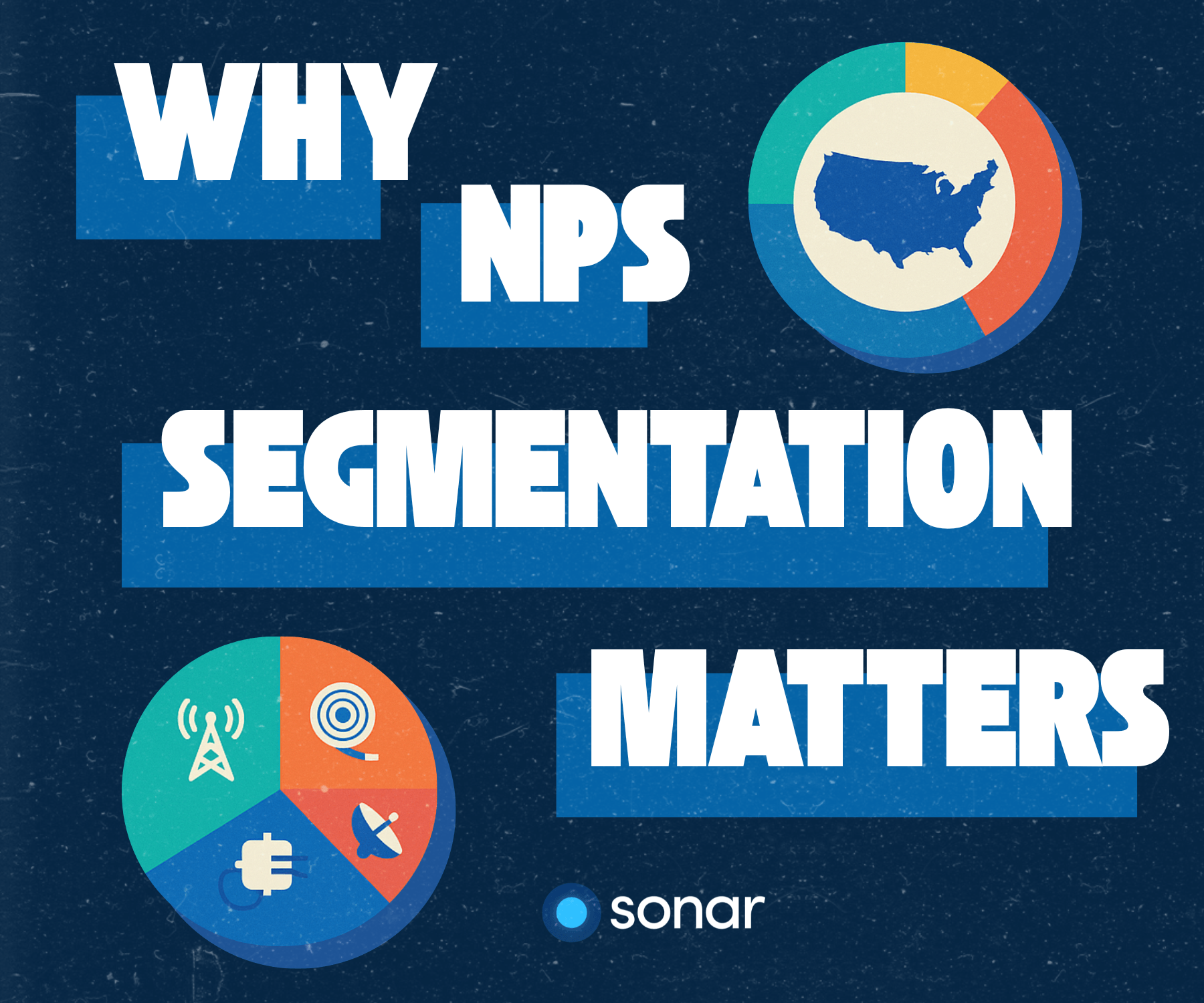SEO Tips for Service Providers
As technology advances every day, the digital world becomes more competitive. There are many different tactics used to stay ahead of your current...

In the broadband industry, Net Promoter Scores (NPS) are rarely pretty—but that doesn’t mean they’re not powerful. What matters most is how you interpret and apply them.
If you're an Internet Service Provider (ISP) measuring NPS without segmenting by geography or service type, you may be making decisions based on misleading insights. Let’s explore why context is critical—and how Sonar DataConnect can help you automatically uncover what’s really going on beneath the surface.
The broadband sector is known for having some of the lowest NPS scores across all industries—often dipping well below zero. According to Satmetrix benchmarks, telco and cable providers frequently trail sectors like financial services, hospitality, and software.
There are several reasons for this:
In other words, a score of –15 might seem like a red flag in another industry. But in telecom? That could be a top-tier result.
Quick refresher: NPS measures customer loyalty with one question—“How likely are you to recommend our service?” Responses are categorized as:
The NPS is calculated as:
Promoters (%) – Detractors (%) = Final NPS
So:

But here’s the critical part: Detractors don’t just lower your score—they actively harm your business.
It takes four Promoters to outweigh the damage caused by a single Detractor—a tough ratio in any market. In broadband, where every customer counts, ignoring Detractor patterns is a direct threat to retention and reputation.
To avoid misreading your score—and to pinpoint where Detractors are coming from—you have to ask: Which customers gave us this score, and why?
That’s where segmentation becomes essential.
If you serve both urban and rural markets, relying on a single NPS score across your entire customer base can be misleading. It may hide regional differences in customer satisfaction—and obscure issues (or wins) tied to specific service areas or subscriber types.
Take Starlink as an example. In urban markets, it’s not a major threat to fiber providers. But in rural areas, it’s a different story—Starlink consistently reports high NPS scores. Why?
Self-install kits make it easy to deploy in areas far from tech support
Lower expectations in underserved regions mean even modest performance can exceed customer standards
If you're seeing strong NPS in metro regions but weaker results rurally, segmentation can reveal where you're losing ground to unexpected competitors. More importantly, it helps you uncover the "why"—so you can fix what’s holding satisfaction back and improve loyalty where it counts.

Are you blending your NPS across fiber and wireless subscribers? You could be missing critical insights.
Combining Net Promoter Scores from fiber and fixed wireless can blur meaningful trends. Fiber typically drives higher satisfaction thanks to its speed and reliability—so if your fiber NPS is falling short, that’s a red flag. It could mean you’re underdelivering on the service that should be your top performer.
Meanwhile, a low wireless NPS can highlight where to take action. For example, you might:
Expand fiber in high-opportunity areas
Improve wireless onboarding or billing clarity
Strengthen support to offset occasional reliability gaps
Segmenting your NPS by connection type gives you a clearer picture of performance, helps you focus improvement efforts, and enables you to balance short-term fixes with long-term growth.

Beyond connection type and geography, there’s real value in segmenting NPS by service rep, support channel, or ticket category. For example, tracking NPS by service rep can highlight top performers and uncover coaching opportunities. Segmenting by support channel (chat, phone, email) reveals how customer sentiment shifts based on communication preferences. And when you map NPS to common ticket types—like billing, installation, or outages—you gain a clearer picture of which customer journeys need the most attention. These internal benchmarks can be just as powerful as external comparisons when it comes to improving satisfaction from the inside out.
Tracking NPS is simple. Understanding it is the hard part.
Sonar DataConnect bridges that gap by transforming raw survey responses into segmented, actionable dashboards.
With DataConnect, you can:
No more spreadsheet chaos. Just real-time insight.
Used wisely, NPS is more than just a metric—it’s your early warning system and growth accelerator.
It can reveal:
But only if you measure it intelligently.
With tools like Sonar DataConnect, you can segment, automate, and act—turning static NPS scores into strategic decisions.
-gif.gif?width=876&height=493&name=Dataconnect%20option%202%20(2)-gif.gif)

As technology advances every day, the digital world becomes more competitive. There are many different tactics used to stay ahead of your current...
.png)
2 min read
The rapid growth of technology has led to an unprecedented reliance on the internet and connectivity. As the demand for high-speed internet...

For Internet Service Providers (ISPs), customer support is mission-critical—but high volumes of support tickets can drain resources, slow down...